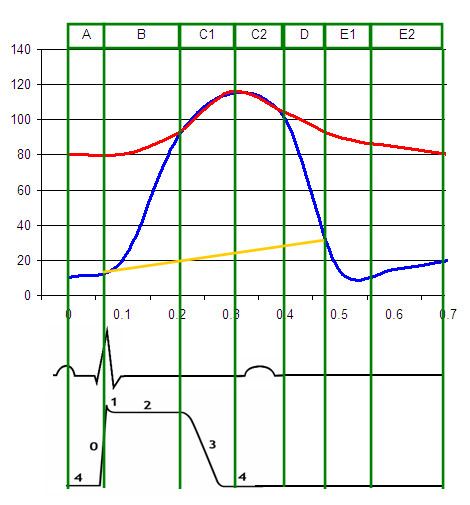 | ||
Ventricular pressure is a measure of blood pressure within the ventricles of the heart.
Contents
Left ventricular pressure
During most of the cardiac cycle, ventricular pressure is less than the pressure in the aorta, but during systole, the ventricular pressure rapidly increases, and the two pressures become equal to each other (represented by the junction of the blue and red lines on the diagram on this page), the aortic valve opens, and blood is pumped to the body.
Elevated left ventricular end-diastolic pressure has been described as a risk factor in cardiac surgery.
Noninvasive approximations have been described.
An elevated pressure difference between the aortic pressure and the left ventricular pressure may be indicative of Aortic stenosis.
Right ventricular pressure
Right ventricular pressure demonstrates a different pressure-volume loop than left ventricular pressure.
